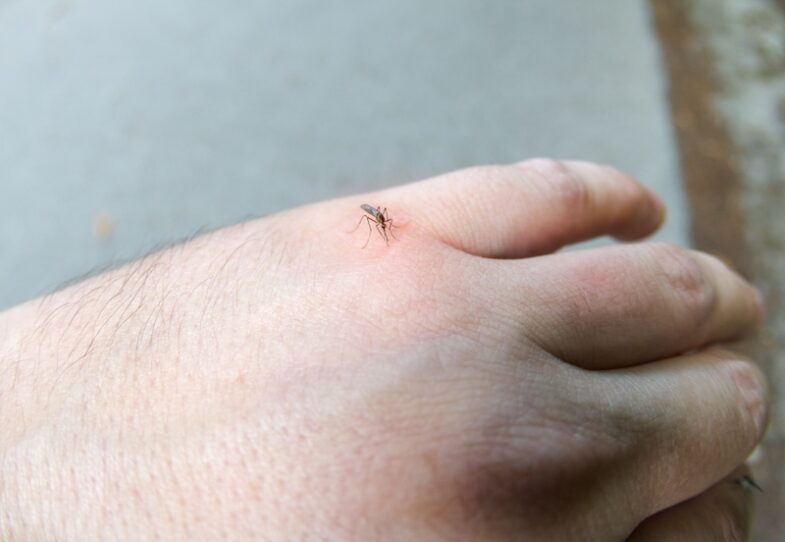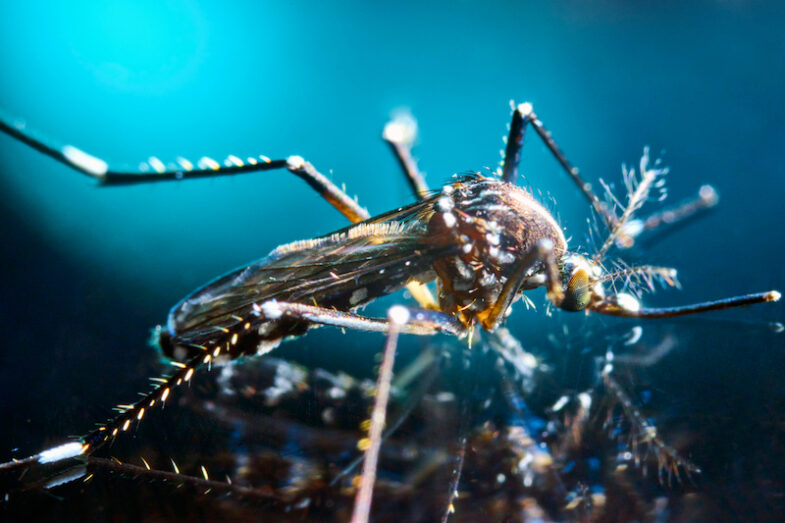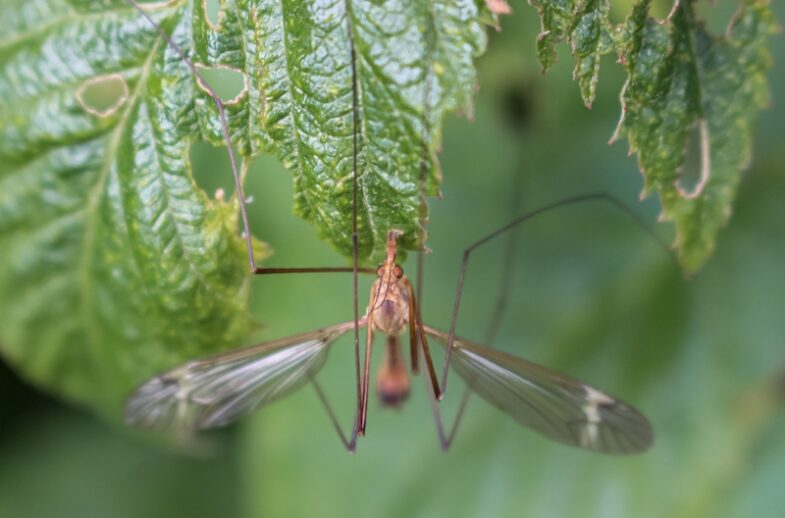READ ALL ABOUT IT
CHECK OUT OUR BLOG FOR CHICAGOLAND & SOUTHERN WISCONSIN
Different Types of Mosquitoes
Different types of mosquito bites have different risks associated with them. Certain types of mosquito bites will only lead to a slight itch while others can leave you fighting for your life. In this article, you will learn about the types of mosquito bites, the different species of mosquitoes, and the answer to the question, “How many mosquitoes are in the world?”
Types of Mosquito Bites
Mosquito bites appear as raised, red bumps a few minutes after a bite. Though annoying and itchy, mosquito bites will typically clear up after a few days with no long-term damage.
In some people, a mosquito bite could be more severe. A large, swollen area, a low-grade fever, hives, and swollen lymph nodes can occur. These more severe symptoms mostly occur in small children, people with immune disorders, and people bitten by a different species of Mosquito than they had been exposed to before.
Another risk associated with all types of mosquito bites is infection. Too much scratching will create tears in the skin where germs can infiltrate and cause an infection. Another risk is the spread of disease. Most types of mosquitoes carry one disease or another. A mosquito will pick up the virus or parasite when they bite an infected animal. When they bite their next target, they spread the disease and the cycle continues.
Why Mosquitoes Bite
The main reason mosquitoes bite has to do with reproduction. Only female mosquitoes suck blood. Male mosquitoes are content eating nectar while female mosquitoes require the protein present in the blood to produce eggs.
When a female mosquito bites you and sucks your blood, they also inject a little bit of its saliva into your bloodstream. This causes an immune system reaction, resulting in the red bump and itchiness.
Different types of mosquitoes are attracted to different things and not all prefer to feed on humans. Initially, it is the carbon dioxide you exhale and the body heat that draws mosquitoes to you. Once they get close, factors such as blood type will make you marginally more enticing to mosquitoes. Blood type O, pregnancy, and drinking beer are said to make mosquitoes slightly more attracted to you. It is important to note that the research covering this phenomenon only used one of the many different species of mosquito. Other mosquito species might have different types of mosquito bite habits.
Different Mosquito Species
Culex Pipiens mosquitoes
The Culex Pipiens mosquito, also known as the common house mosquito, is notorious for spreading various diseases, including the West Nile virus, Encephalitis, and filarial worms. Their bites pose a significant health risk to various species, including humans, due to their ability to transmit these harmful pathogens through their unique feeding behavior. Particularly in the eastern United States, this mosquito is the primary vector for both West Nile Virus and St. Louis encephalitis (SLE), diseases that have significant health implications for birds and mammals alike. The adaptability of the Northern House Mosquito in urban environments increases their contact with humans, making them a formidable vector in transmitting these serious illnesses.
This species is primarily nocturnal, most active in biting at night, yet it displays a versatile feeding pattern extending into daylight hours, especially in urban settings where it often shifts its preference from avian to mammalian hosts, including humans.
These mosquitoes breed in a myriad of freshwater resources, such as pools, ponds, and even environments as polluted as sewage treatment plants. Their adaptability makes them prevalent in many environments and indicates these aquatic ecosystems’ health. Particularly in urban areas, their presence often signals polluted conditions.
In addition to their health impact, the physical appearance of the Culex Pipiens mosquito is quite distinct. They generally have a plain brown body with white markings on their legs and body, which can help identify them amidst other mosquito species.
Their crepuscular behavior—being most active at dusk and dawn—further complicates control efforts, as this is when human activity is often low, and preventive measures may be less effective. Understanding their behavior and habitats is crucial in developing strategies to mitigate their impact on public health.
In conclusion, the Culex Pipiens mosquito is a complex pest, adaptable and capable of transmitting various diseases. Its presence in urban and suburban areas and its ability to indicate ecological health make it a significant focus for public health officials and environmentalists.
Aedes Vexans
The Aedes Vexans, the inland Floodwater mosquito, is the most common mosquito in most of the United States. It is also common throughout the rest of the world and has been identified on every continent except South America and Antarctica.
Funny enough, the name Vexans comes from the Latin word meaning to vex or annoy. It is a fitting name for such a pervasive nuisance.
The Aedes Vexans mosquito sports white bands on the base of each segment of the leg and abdomen coving its black scaled body. When viewed sideways, they have a bit of a B look because of the way their body indents in the middle.
Aedes Aegypti mosquitoes
This mosquito, commonly known as the yellow fever mosquito, uses humans as its primary blood source. Though their common name implies that they carry yellow fever, yellow fever is not the only disease they carry. Dengue, Zika, and Chikungunya virus are among the other diseases these mosquitoes are known to carry.
Aedes Aegypti is found in 23 states including the southeastern United States, up the east coast to New York, and parts of the Midwest including Indiana and Illinois. They are commonly found indoors and bite during the daytime.
Aedes Albopictus mosquitoes
The Asian Tiger Mosquito, also known as Aedes Albopictus, is a notorious vector known for its ability to transmit various serious illnesses. Among these, the mosquito can transmit diseases like the Zika virus, West Nile Virus, Chikungunya, and dengue fever. Additionally, it carries the risk of spreading yellow fever and encephalitis. Not only a threat to human health, this species also poses a significant risk to pets as it can be a carrier of heartworm. This wide range of diseases highlights the critical need for effective control and prevention measures against the Asian Tiger Mosquito to protect human and animal health.
The tiger part comes from the mosquito’s distinct white strip that runs from the mosquito’s head down its back. This daytime biter is known to transmit diseases like the Zika virus, West Nile Virus, Chikungunya, and dengue fever.
Unlike the Aedes Aegypti, Aedes Albopictus can survive in colder climates. Because Aedes Albopictus and Aedes Aegypti compete for the same resources, Aedes Aegypti has seen a decrease in population.
Anopheles Gambiae mosquitoes
This mosquito, commonly known as the African Malaria Mosquito, is known for spreading malaria. It is found throughout tropical Africa and is the major vector for the malaria virus. Because it mostly bites at night, mosquito bed nets are important in Anopheles Gambaiae-infested areas.
The Anopheles Gambiae mosquitoes tout long palps, appendages near its mouth, almost as long as their proboscis, its feeding tube. They have a unique resting position where their abdomen is raised in the air and varies in color from light brown to grey with pale, yellow spots.
What is the role of Anopheles Quadrimaculatus in disease transmission?
The Anopheles quadrimaculatus mosquito, commonly called the common malaria mosquito, plays a pivotal role in the spread of several diseases, particularly in the United States. Recognized primarily as the principal vector of malaria, this species is indigenous to eastern North America, where it thrives from the southern regions of Canada down to Florida and extends westward towards Minnesota and parts of Mexico.
Active predominantly during the warmer summer, the common malaria mosquito prefers feeding on humans and large mammals. Beyond malaria, it is instrumental in transmitting other serious illnesses, including the Cache Valley Virus, West Nile Virus, and St. Louis encephalitis. Furthermore, it facilitates the spread of parasites such as those responsible for dog heartworms. This underlines the significant health risks this mosquito species poses in disease transmission across its geographic range.
Mansonia Mosquitoes
Mansonia mosquitoes are typically colored black or brown and possess shimmering wings and legs. These mosquitoes are notably larger in size compared to other mosquito species. Known for transmitting encephalitis, Mansonia mosquitoes can be found in various parts of the world. They are known to be active during the evening hours.
Psorophora Mosquitoes
Psorophora mosquitoes are known for their aggressive nature and preference for feeding on large mammals, including humans. They are distinct in their ability to fly long distances for blood meals. Their breeding grounds are roadside ditches, woodland pools, and pastures.
Toxorhynchites Mosquitoes
Toxorhynchites mosquitoes differ from other species in that they do not pose any risk to humans. Their breeding grounds can be found inside tree holes and artificial containers. These mosquitoes feed on plant nectar, unlike many other mosquito species that feed on blood. An interesting behavior of Toxorhynchites mosquitoes is that their larvae prey on the larvae of other mosquitoes in the same area.
Wyeomyia Mosquitoes
Wyeomyia mosquitoes are distinct for their close association with pitcher plants and bromeliads. One unique feature of these mosquitoes is that they are not carriers of any viruses. As a result, they do not pose any risk to humans, unless individuals venture into their habitat.
How Many Mosquitoes Are in the World?
While the different species described above are some of the most common types of mosquitoes in the world, there are many more species and an exponentially larger number of individual insects. So, how many mosquitoes are in the world? How many types of mosquito bites from these different types carry disease?
There are more than three million species of mosquitoes found across the globe and over 110 trillion individual mosquitoes found in the world. So the simple answer to the question, “How many mosquitoes are in the world?” is that there are a lot of mosquitoes in the world.
Though there are so many, only three different species are primarily responsible for the spread of diseases in humans. Anopheles, Culex, and Aedes mosquitoes leave the types of mosquito bites that are most likely to result in disease.
Exterminating Mosquitoes
Now that you know the risk that different types of mosquito bites carry, you should begin the fight against them. While simple things like a bug spray with DEET and removing standing water can help keep most types of mosquitoes away, the only surefire way to get rid of mosquitoes is through an exterminator.
Skeeter Beater is the best mosquito control specialist in the Chicagoland and Southern Wisconsin area. Our experts can help you take your yard back from these pests.



